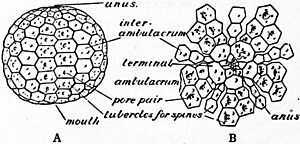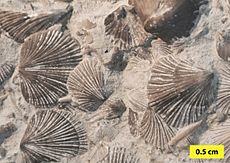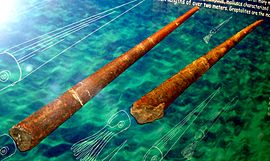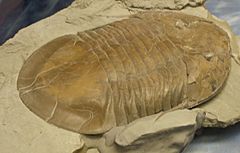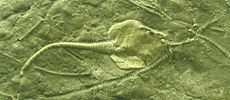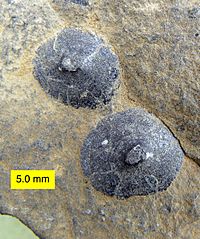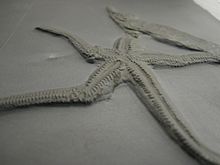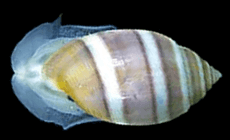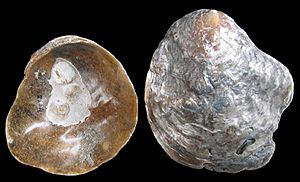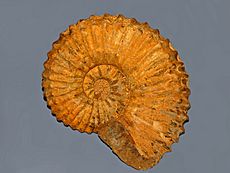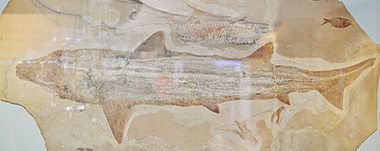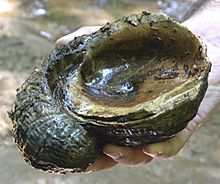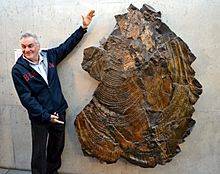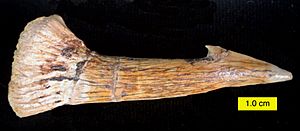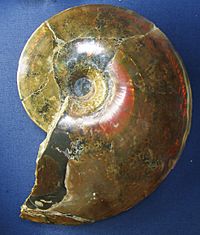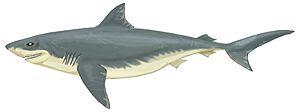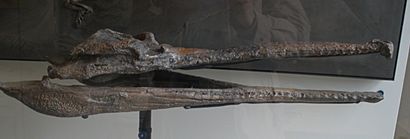List of the prehistoric life of Minnesota facts for kids
This article is a list of amazing ancient creatures whose fossils have been found in Minnesota. These fossils tell us about the different kinds of life that lived here millions of years ago, long before humans existed!
Contents
Ancient Life in Minnesota: The Precambrian Era
The Paleobiology Database doesn't show any known fossils from the Precambrian Era in Minnesota. This means we haven't found any signs of life from that super ancient time in the state.
Life in the Paleozoic Era
The Paleozoic Era was a very long time ago, lasting from about 541 to 252 million years ago. During this era, life mostly lived in the oceans, and many different kinds of sea creatures appeared. Minnesota was covered by a shallow sea for much of this time, so many fossils found here are from marine animals.
Amazing Paleozoic Animals Found in Minnesota
Here are some of the cool ancient animals whose fossils have been discovered in Minnesota from the Paleozoic Era:
- Actinoceras: These were ancient creatures related to squids and octopuses, but they lived inside a long, straight shell. They are a type of Nautiloid.
- Bothriocidaris: This was an early type of sea urchin, a spiky creature that lived on the seafloor.
- Bumastus: A type of trilobite, which were ancient sea bugs with hard, segmented bodies. They are now extinct.
- Calymene: Another kind of trilobite, known for its distinctive head shape.
- Cameroceras: A very large, straight-shelled Nautiloid that could grow to be many meters long!
- Cincinnetina: A common type of brachiopod, which are shellfish that look a bit like clams but are different inside.
- Endoceras: Another large Nautiloid with a long, straight shell.
- Flexicalymene: A common trilobite that could roll up into a ball for protection, much like a modern pill bug.
- Glyptocrinus: A type of crinoid, also known as "sea lilies," which were animals that looked like plants and filtered food from the water.
- Isotelus: One of the largest trilobites ever found, some fossils are over a foot long!
- Lingula: A very old type of brachiopod that has changed very little over millions of years.
- Orthoceras: A common straight-shelled Nautiloid.
- Pleurocystites: A type of cystoid, which were ancient, stalked creatures related to sea stars and sea urchins.
- Scenella: An early type of mollusc with a simple, cap-shaped shell.
- Strophomena: Another common type of brachiopod with a wide, flat shell.
- Urasterella: An ancient type of sea star (starfish).
Life in the Mesozoic Era
The Mesozoic Era is often called the "Age of Dinosaurs," lasting from about 252 to 66 million years ago. While dinosaurs roamed the land, Minnesota was still partly covered by a sea, so many fossils from this time are marine creatures.
Cool Mesozoic Animals Found in Minnesota
Here are some of the interesting ancient animals whose fossils have been found in Minnesota from the Mesozoic Era:
- Acteon: A type of small sea snail with a barrel-shaped shell.
- Acanthoceras: A type of ammonite, which were coiled-shelled creatures related to squids and octopuses. They are now extinct.
- Anomia: Also known as "jingle shells," these are thin, irregular bivalve shells.
- Calycoceras: Another type of ammonite with a ribbed shell.
- Carcharias: An ancient type of shark.
- Cretolamna: A prehistoric shark that was common in the seas during the Cretaceous period.
- Dentalium: Also called "tusk shells," these are long, tube-shaped shells from a type of mollusc.
- Exogyra: A type of oyster with a thick, coiled shell.
- Hybodus: An ancient shark with two dorsal fins, each having a spine.
- Inoceramus: A very large type of bivalve (like a clam or oyster) that could grow to enormous sizes.
- Lingula: This ancient brachiopod continued to live in the Mesozoic Era.
- Mytiloides: Another type of large bivalve related to Inoceramus.
- Onchopristis: A giant sawfish with a long snout lined with sharp teeth.
- Ostrea: A common type of oyster.
- Pecten: A type of scallop.
- Pinna: A large, fan-shaped bivalve.
- Placenticeras: A type of ammonite with a flat, disc-like shell.
- Scaphites: An ammonite with a unique, partly uncoiled shell.
- Squalicorax: Also known as the "crow shark," this was a common shark during the Late Cretaceous period.
- Terminonaris: A large, crocodile-like reptile that lived in the seas.
Life in the Cenozoic Era
The Cenozoic Era is the most recent era, starting about 66 million years ago and continuing to today. This is the "Age of Mammals," and Minnesota saw large mammals like mammoths and mastodons roaming its lands.
Giant Mammals of Cenozoic Minnesota
Here are some of the large mammals whose fossils have been found in Minnesota from the Cenozoic Era:
- Bison: Ancient types of bison, including the larger Bison antiquus, which were ancestors of today's American bison.
- Mammut: The mastodon, a large, elephant-like animal with straight tusks, covered in shaggy hair.
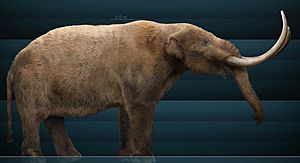
- Mammuthus: The mammoth, another giant elephant-like animal, famous for its long, curved tusks and thick fur. The Mammuthus columbi (Columbian mammoth) was a common species in North America.


